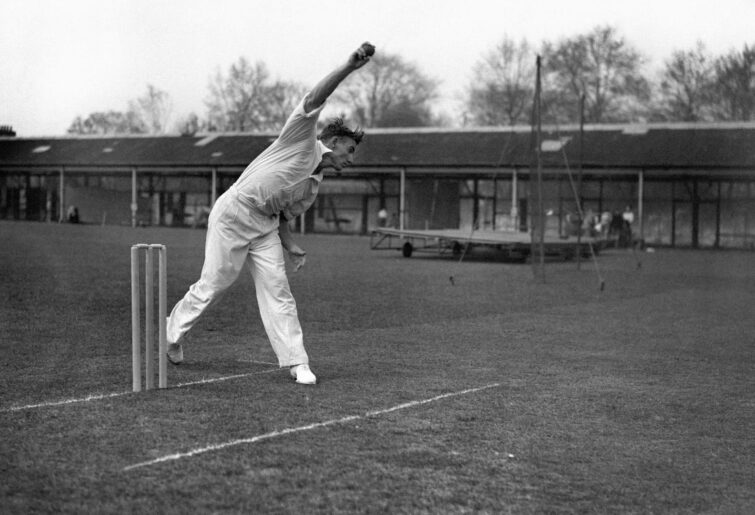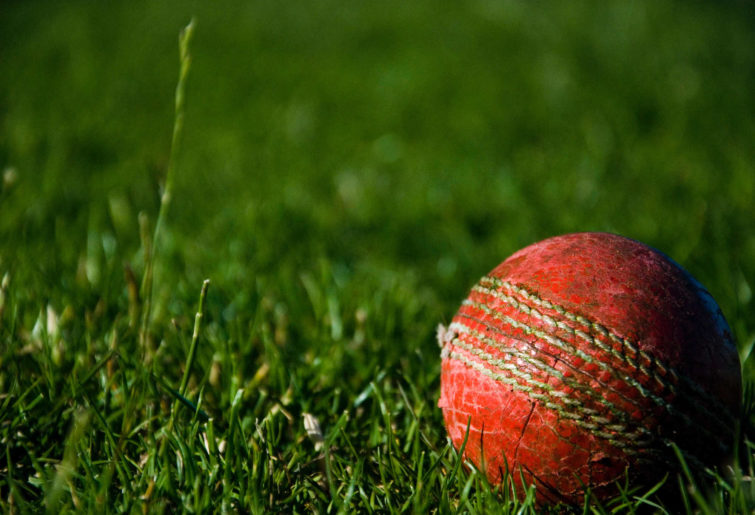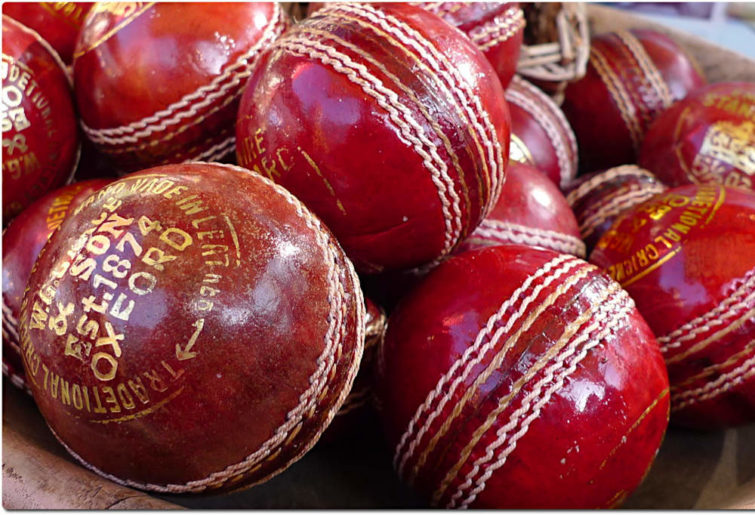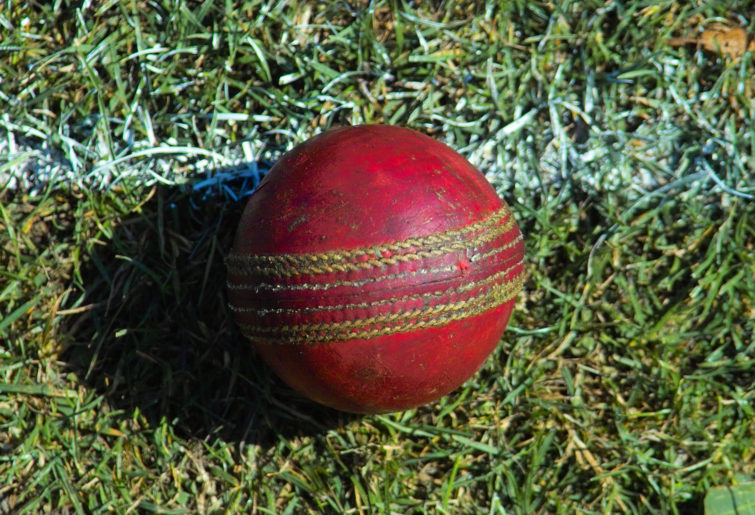Sheffield Shield wrap: Crowning the award winners for the 2024 Season
The conclusion of the Sheffield Shield season, here's the announcement of the players and teams who have succeeded - and failed - this year.
Opinion
If you think I’ve been obscure on this site before, I’m about to double down with this piece – the story of Queensland’s failed Sheffield Shield campaign of 1956-57.
Almost 40 years before we won that damn trophy – consider this a warning I’m going to use the term ‘we’ in this article considering my irrational partiality – Queensland came within one point of taking the Shield.
One. Point.
Imagine if we’d won it then.
So much trauma could’ve been avoided – so, so much trauma. Almost forty years of it.
Queensland started competing in the Shield in 1926-27. It didn’t go well for us at first, to put it mildly. Until 1939-40 we came last every season apart from the three summers where we came – drumroll, please – second last.
Bradman’s innings of 452? That was made against Queensland. We had some good players, like Percy Hornibrook, Eddie Gilbert, Don Tallon, Ron Oxenham, but couldn’t put together a good team.
Things improved after the war. From 1947-48 to 1950-51 Queensland came second last four years in a row! Then we started coming third last – or third, as there were only five teams in the competition. Our position as national easybeats was taken by South Australia, who from 1949-50 to 1960-61 were last nine seasons out of 12. Progress!
Then came 1956-57.
Queensland had a good team that season – a very good team.
Let’s consider the stars.
Ray Lindwall was a fast bowler – and a handy tail-ender – in decline, but when you’re one of the greatest in Australian history, decline is still pretty good. Lindwall was from New South Wales originally but started playing for Queensland in 1954-55 and transformed the side.

(Photo by S&G/PA Images via Getty Images)
Wally Grout was the wicketkeeper. He would make his test debut against South Africa the following summer and become acknowledged as one of the greatest Australian wickies of all time.
We had the Archer brothers, Ken and Ron. Ken, a batter, played five tests for Australia. Ron was a bowling all-rounder who it was hoped would take over from Keith Miller and was a Test regular.
Peter Burge was a terrific middle-order batter.
Ken Mackay was a splendid batting all-rounder, if not exactly brisk with the run rate, and magnificent fighter.
Ron Archer, Lindwall, Burge and Mackay were all picked on the 1956 squad to tour England, Pakistan and India. Lindwall even captained Australia in a test on that tour when Ian Johnson was injured.
Queensland also had some players who could’ve been stars if from a southern state.
Ray Reynolds played 54 first-class games for 3693 runs at an average of 46. Those are good stats, and if Reynolds had been from New South Wales or even Victoria or South Australia, he would’ve played Tests.
Jim Bratchford was a very handy player, solid seamer and useful lower-middle-order bat.
There were also two excellent spinners: Mick Raymer (201 first-class wickets at 32.3 and a batting average of 23) and Walter Walmsley (37 games, 122 wickets at 32, 1064 runs at 27). Only their age – Raymer was 38, Walmsley was 40 – kept them out of Test discussions, as 1950s cricket in Australia was very ageist.
Throw in other handy players like Donald Bull, Neil Harvey’s brother Clarence, John McLaughlin and an exciting young leggy, John Freeman and Queensland had a very good side. It had everything – pace, spin, excellent keeper, dashers, blockers, experience, youth and all-rounders.
And the team could’ve been even stronger had we not lost Colin McCool to English cricket.
There would be no international cricket at home in 1956-57, although an Australian side would visit New Zealand in February and March 1957 to play unofficial Tests and South Africa starting in September 1957 to play official Tests. It was the first summer Western Australia would play a full season of Shield matches; previously they’d played only half.
It was also a time of rebirth in Australian cricket. After the post-war high – 1948 and all that – the national side had been in a bit of a slump, losing to England three series in a row and losing to Pakistan. Keith Miller, Gil Langley and Ian Johnson, three very experienced players, were going to retire. This meant vacancies were open for the captain of New South Wales, Victoria and Australia as well as the position of wicketkeeper.
So there was a lot at stake.

The powerhouse state of the post-war period was New South Wales. From 1948-49 until 1965-66 there were only four seasons in which they didn’t win the Shield. And it was NSW who Queensland took on in their first Shield game that summer.
The Australian team was still in India at this stage, but both sides were strong even without their internationals. Queensland had Grout, Ken Archer and Walmsley, while New South Wales included future and past internationals like Norm O’Neill (only 19), Peter Philpott, Willie Watson and Jim de Courcy. They were without future Test captain Brian Booth, who was representing Australia in hockey for the Olympics at the time.
Queensland made 325 (Ross Lyons 66, Ken Archer 64) and NSW accumulated 345 (O’Neill 63, Freeman 5-77). Queensland then made only 243 in response, and the rain-shortened game ended in a draw with NSW 4-131 (O’Neill 60). New South Wales won on first innings points.
After the game Ken Archer, who’d captained Queensland in the absence of Lindwall, announced his retirement from first-class cricket to focus on his job as a sales manager for a Brisbane radio station. I think he may have hung on just to play that game while the Test players were away, because they were back for the next match – except Ron Archer, who fell injured in Pakistan and was ruled out of cricket all summer.
The big news on their return involved the retirement of Keith Miller and Ian Johnson, which led to Ian Craig being appointed captain of NSW over Richie Benaud and Jim Burke, while Neil Harvey got the job in Victoria over Colin McDonald.
Out of interest, Ian Johnson thought Ray Lindwall was the leading candidate to captain Australia. But of course he was a fast bowler over 30 based in Queensland so had three strikes against him.
Queensland’s second Shield game that summer was against WA.
We batted first and scored 389 (Burge 105, McLaughlin 93, Mackay 88) and at one stage had WA at 4-16, with Freeman taking three wickets for ten runs – including Bob Simpson, who had just moved to WA from New South Wales, a move that was to make his career. However batting from Barry Shepherd (173), then only 19, and Ken Meuleman (125) saw them put on 365 (Freeman 6-134). The game, again shortened by rain, ended in a draw.
Queensland proved they were genuine candidates to win the Shield in their next match, against Victoria. Incidentally, this was Neil Harvey’s first game as Victorian captain. The Southerners made 207 (Harvey 108, Lindwall 5-60), Queensland 458 (Burge 135, Lindwall 70, Mackay 66), and Victoria crumbled for 209 (Harvey 53, Bratchford 5-28). Queensland won by an innings and 42 runs. This was a strong Victoria side too – along with Harvey it included players like Colin McDonald, Bill Lawry, Sam Loxton, Ian Meckiff and Lindsay Kline.
Game. On.

(Credit: Swamibu/CC BY-NC 2.0)
Queensland then played WA again, making 290 (Reynolds 57) and dismissing WA for 75 (Bobby Simpson 96, Walmsley 4-22, Freeman 3-51). Queensland batted well in the second innings, earning an overnight lead of 402. and one newspaper headline read “Queensland win a certain”.
But there’s always a but with Queensland cricket
But they had five sick players, including Lindwall, who was unable to bowl in WA’s second innings. So Queensland elected to bat on until they declared at 4-301 (Mackay 83). This annoyed the West Australians, whose lead paceman, Ron Gaunt, started bowling bodyline at batters McLaughlin and Bull until the umpire told WA captain Ken Meuleman to stop it.
WA batted well in response and were 3-224 (Laurie Sawle 66, Simpson 112 not out) when the game ended in a draw.
Bodyline in 1956? Yep, it happened.
By this stage NSW were comfortably on top of the Sheffield Shield table, but Queensland were second.
Queensland played South Australia next. They put on 433 (Lindwall 4-85). We made 258 (Mackay 107) and followed on, but the game ended in a draw with us at 3-294 (Reynolds 110).
Far more exciting was another match going on at the same time – a New South Wales versus Victoria game in which NSW had set 161 to win in their second innings and Ian Craig, suffering from tonsillitis, dragged himself from his hotel bed to help his collapsing side recover from 7-70 to tie the game. That’s the sort of heroic stuff that impresses selectors, and I think it played a major part in Craig’s later promotion to captain of Australia even though he wasn’t a regular in the Test side.
On 27 December 1956 the selectors picked teams for a Stan McCabe-Bill O’Reilly testimonial match – a Ray Lindwall-led XI against a Neil Harvey-led XI. This was seen very much as a trial game for the Australian team to visit New Zealand at the end of the summer. The Queenslanders selected were Burge, Mackay, Lindwall, Grout and John Freeman. That’s how excited the selectors were for Freeman’s prospects.
Spoiler: it didn’t go too well for him, and his form kind of tailed away after that.
Before that game, Queensland played New South Wales. In hindsight this was the most crucial match of the season.
NSW batted first and made 271 (Alan Davidson 72, Lindwall 4-82). Queensland monstered them in response, reaching 8-574 (Mackay 169, Grout 118) before declaring, giving themselves over a day to dismiss New South Wales. We had the firepower too – Lindwall, Walmsley, Freeman, Mackay and Bratchford – And at one stage New South Wales were 6-185.
It seemed we were home, but the blue buggers hung on to bat out the game, lasting 350 minutes to make 8-335 (Walmsley 5-124). This was mostly due to Bill Watson’s incredible innings of 198. To make it worse, Watson was dropped three times – once by Lindwall off the bowling of Bratchford when Watson was 23, once by Freeman off his own bowling on 90 and Grout missed a stumping off Walmsley’s bowling when on 91.
Dropped. Three. Times.
Sigh.
New South Wales now led the competition on 21 points, with Queensland second on 16, and Victoria third on 12.
But wait, it’s not over.

(Wiki Creative Commons, CC BY-SA 3.0)
Queensland bounced back against South Australia. We batted first and scored 460 (Lindwall 93, Mackay 84 with an injured hand) over two days. When Graeme Hole scored 89 for South Australia it seemed Queensland were done, but the Croweaters lost 14 wickets in three and a half hours to be dismissed for 280 (Hole 89, Lindwall 5-50) and 105 (Mackay 5-15, Walmsley 5-51). We won by an innings.
Queenslander!
This made Queensland level with NSW, but the latter had two matches to play while we just had one.
New South Wales could not be beaten if they beat South Australia outright and staved off a major defeat by Victoria. They failed to beat South Australia outright.
Queensland’s last game of the summer was against Victoria. We batted first, were 6-87 but recovered to make 411 (Burge 210). Victoria made 366 (Harvey 115) when the game ended in a draw. But Queensland got first innings points and so were equal with New South Wales.
The 14-man team to tour New Zealand was announced on 23 January 1957. It included only one Queenslander, Burge, which was a shock – but not as shocking as the appointment of Ian Craig as captain of Australia. At only 21 he became the youngest player to ever captain Australia. Most thought the job should’ve gone to Neil Harvey – and it should have gone to Harvey. At least the Victorian was picked in the squad – Lindwall, another candidate for the national captaincy, was completely overlooked.
This added a lot of spice for the next game, the climax of the season: New South Wales versus Victoria.
If Victoria defeated NSW outright, Queensland would win the Sheffield Shield on averages.
To add even more heat to the pot, Victorian opener Colin McDonald was injured in the nets as the toss was being made. Harvey asked Craig if he could alter his side to bring in Bill Lawry, but Craig refused, not wanting to concede any advantage to the Victorians. This was within the rules but annoyed Harvey, who was already in a grumpy mood for having been overlooked for the national captaincy.
Craig had won the toss and sent Victoria in to bat. A furious Harvey went out to open in McDonald’s place and scored 209 – Richie Benaud described it as one of the best innings he saw in Shield cricket – out of a total of 441. When NSW only managed 149 in response they were on their way to an outright defeat. Batting second, they were 3-42 then 7-280, and it looked like they’d lose and the Shield would go to Queensland.
But then – and remember, there’s always a but with Queensland cricket.
But the tail wagged, and New South Wales held on to make a match-saving 400 due partly to Craig’s heroic innings of 89 but also Sid Carroll batting over six and a half hours to make 86. This gave NSW the one point they needed to beat Queensland, because at the time you got one point for a first-innings loss if you didn’t lose outright.
Damn them.
And so we came second. By one point.
To give New South Wales their due, their 1950s side had the self-belief of a truly great team. Whenever they got in trouble, they found a way to get out of it. That’s what great teams do.
Queensland were left to rue the if-onlys. If only Ron Archer had been available, if only they’d dismissed Watson in that crucial game, if only Ian Meckiff hadn’t fallen injured in that final NSW-Victoria game.
Still, Queensland would’ve been hopeful of another shot at the title. After all, a lot of their best players were young. And indeed we came second twice over the next few summers, though not as close as in 1956-57. In 1958-59 we were 30 points to New South Wales’ 52, and in 1961-62 we were 36 points to New South Wales’ 64.
Mackay, Oldfield and Burge all toured South Africa and became crucial members of the Australian side that became the best in the world. This was under Richie Benaud, incidentally – Craig led Australia well in New Zealand and South Africa but his batting was never Test class, and I think the selectors were relieved when hepatitis ruled him out of the 1958-59 Ashes before they had to drop him. They never picked him for Australia again.
Ray Lindwall, overlooked for South Africa, fought his way back into the Australian side in 1958-59. Ron Archer’s injuries meant he never played for Australia again, although he did play as a batter only for Queensland in 1958-59 before retiring.
In the early 1960s things turned bad again for Queensland. From 1962-63 until 1972-73 we came last for nine of 11 seasons. Nine! Then Greg Chappell arrived in 1973-74 and we came second in the Shield for four out of the next five seasons, and in the 1980s of course turned losing the final into an art form before 1994-95.
But 1956-57 was an interesting season. A tie in the Sheffield Shield. Ian Craig versus Neil Harvey. Bodyline comes back briefly. A tour of New Zealand that should’ve been official.
But most of all, Queensland’s first great choke in the Shield.